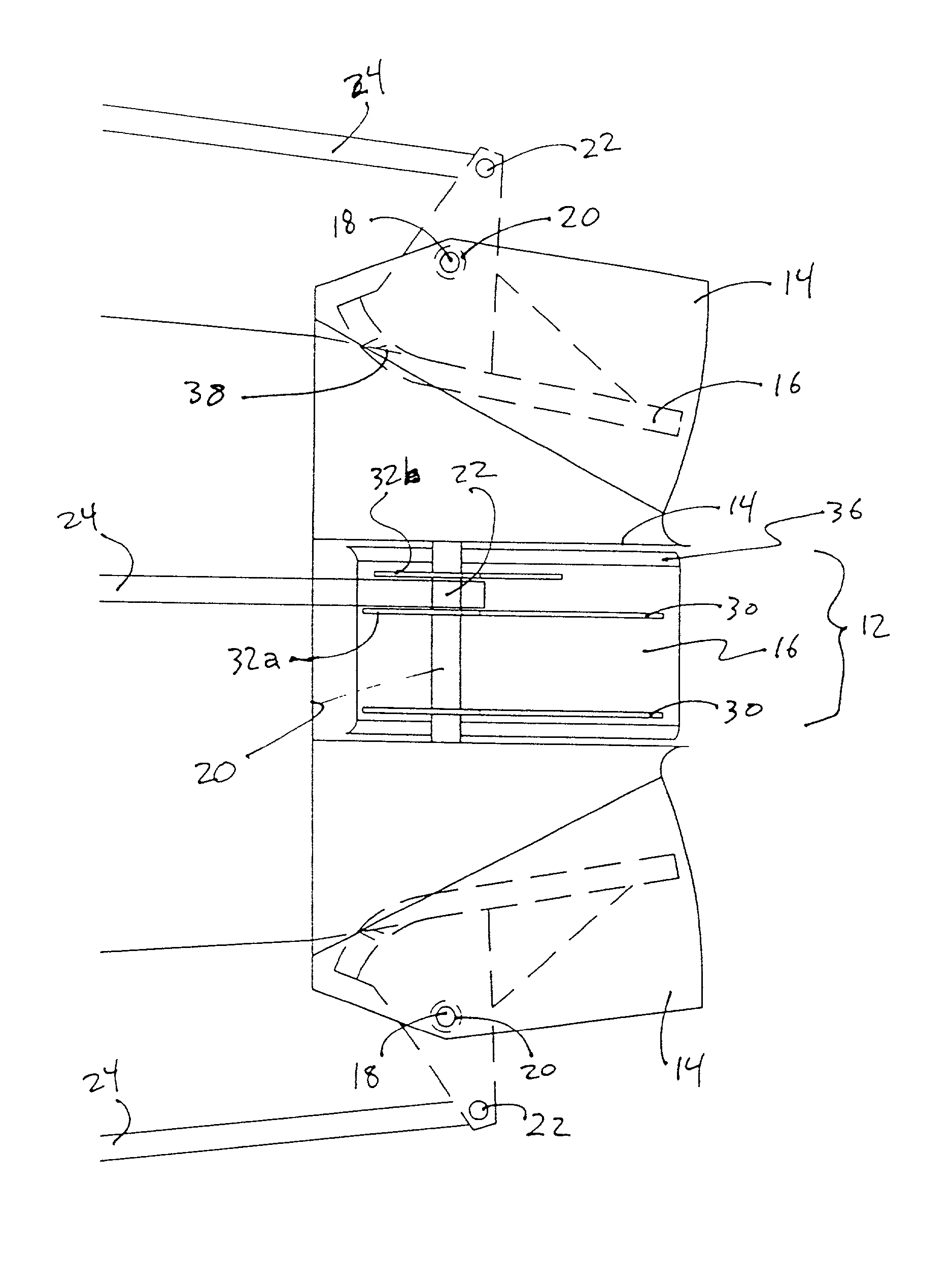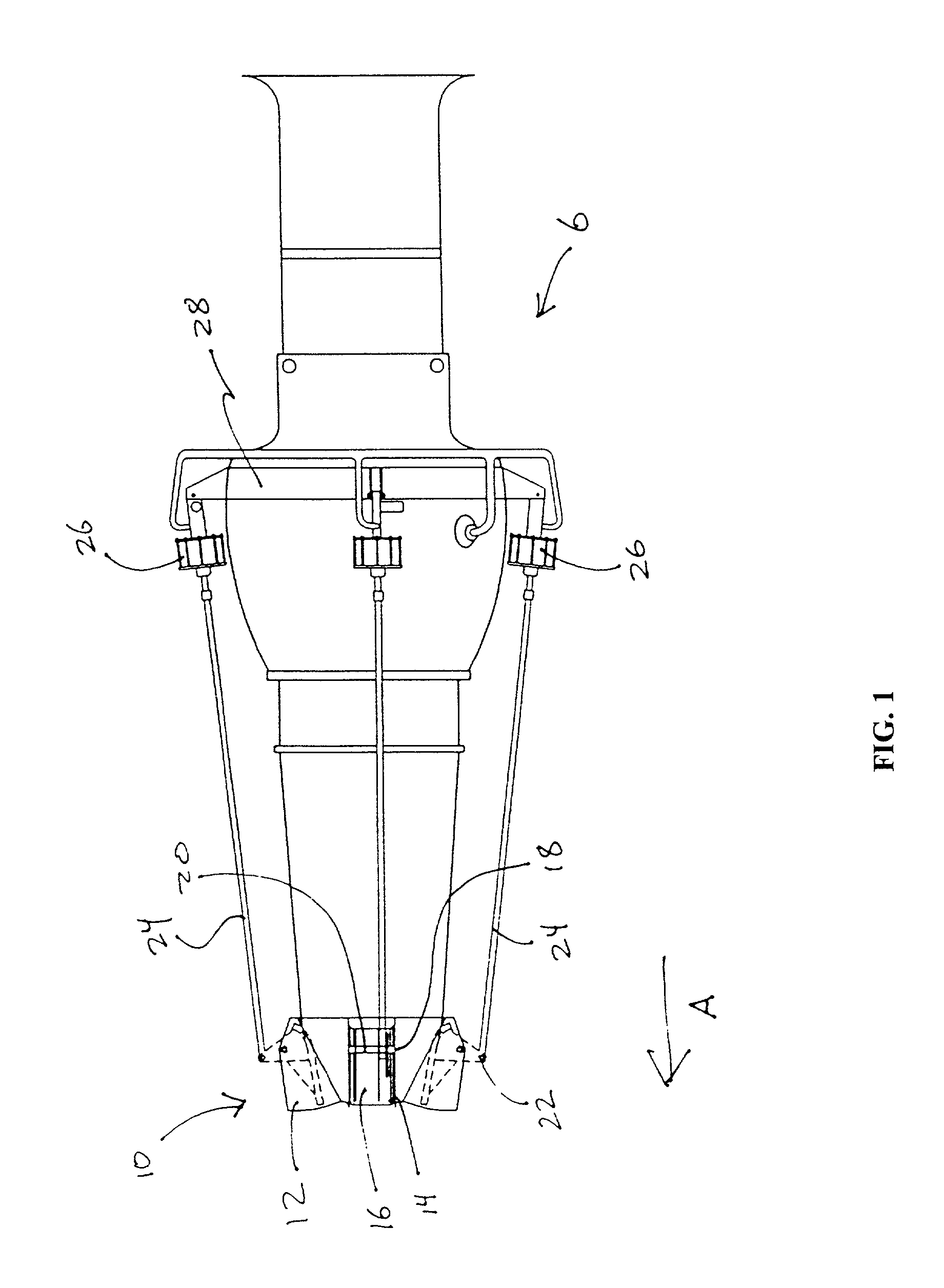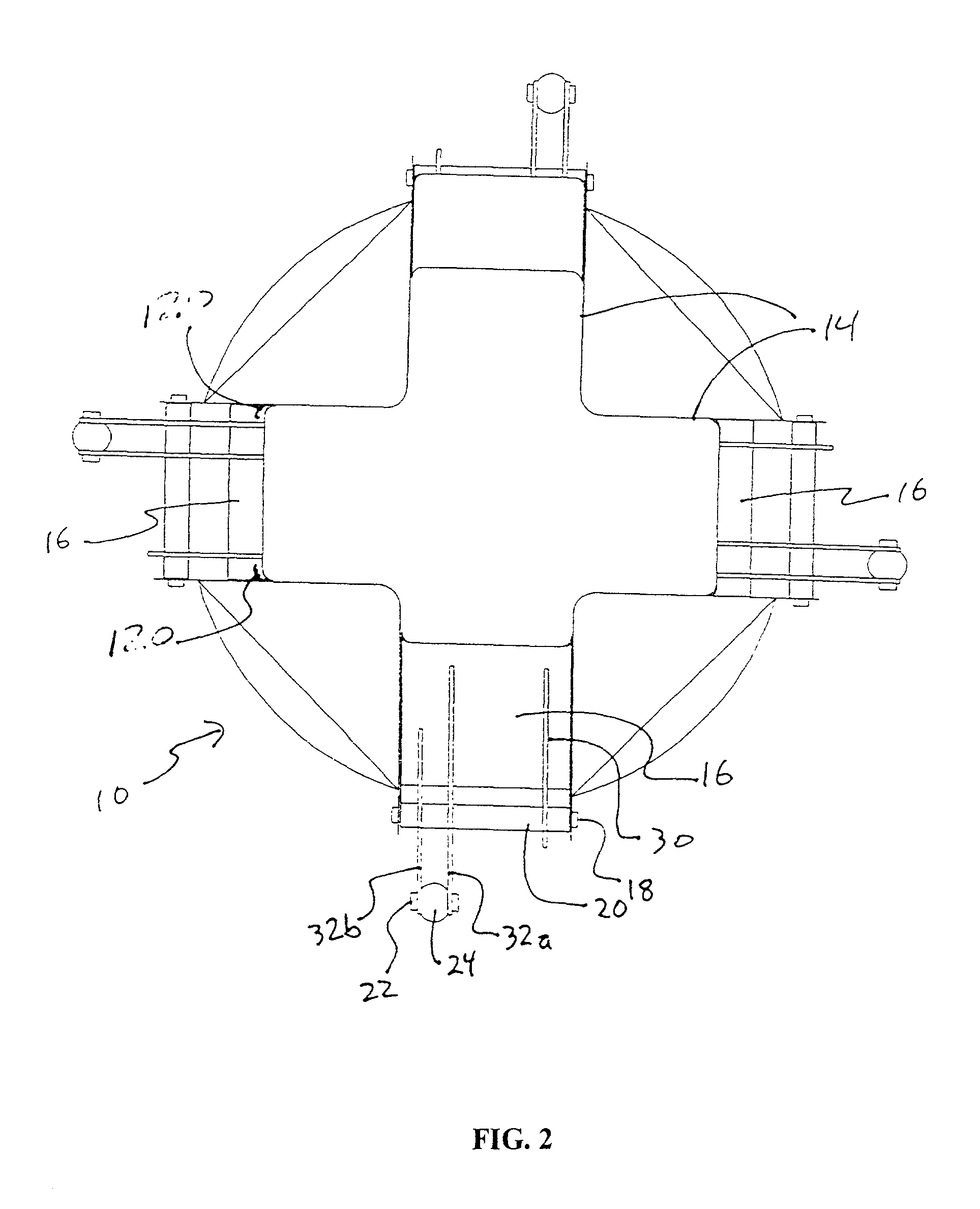Apparatus and method for thrust vector control
a technology of thrust vector and apparatus, applied in the direction of marine propulsion, servomotors, vessel construction, etc., can solve the problems of increasing cost, reducing reliability and durability, and complex and expensive ducts,
- Summary
- Abstract
- Description
- Claims
- Application Information
AI Technical Summary
Problems solved by technology
Method used
Image
Examples
Embodiment Construction
[0030] Referring now to the figures where like reference numbers indicate like elements of the present invention, FIG. 1 is a side view of a jet engine with the thrust vector controller of the present invention installed. Propulsive exhaust exits the engine at the right of the figure in the direction indicated by arrow A. Thrust vector control housing, 10, has four brackets, 12, each comprised of a pair of bracket walls, 14. Each bracket, 12, holds a vane, 16. Vanes pivot around fulcrums, 18, on fulcrum rods, 20. Vanes, 16, are rotated around fulcrum, 18, by pressure on actuation pivot, 22. Pressure is applied to actuation pivot, 22, via piston rods, 24. Piston rods, 24, are extended and retracted by pistons in cylinders, 26, which are pivotally mounted on the jet engine body by housing 28.
[0031] As best seen in FIGS. 2 and 2A, four brackets are radially disposed perpendicular to the direction of exhaust thrust, which is out of the page, towards the viewer in FIG. 2. Within each bra...
PUM
 Login to View More
Login to View More Abstract
Description
Claims
Application Information
 Login to View More
Login to View More - R&D
- Intellectual Property
- Life Sciences
- Materials
- Tech Scout
- Unparalleled Data Quality
- Higher Quality Content
- 60% Fewer Hallucinations
Browse by: Latest US Patents, China's latest patents, Technical Efficacy Thesaurus, Application Domain, Technology Topic, Popular Technical Reports.
© 2025 PatSnap. All rights reserved.Legal|Privacy policy|Modern Slavery Act Transparency Statement|Sitemap|About US| Contact US: help@patsnap.com



